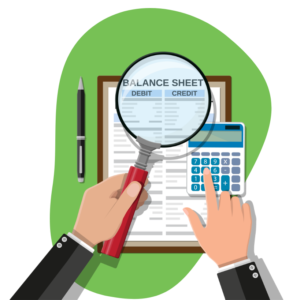 Having accurate financial statements is key to running a successful business. If you go to the bank for financing, your banker is going to want to see quality financials that are truly representative of your business performance. Accurate financial information will assist you in making business decisions that help move your business forward. So, how do you know if they are accurate? Here are 5 review tips to get you started.
Having accurate financial statements is key to running a successful business. If you go to the bank for financing, your banker is going to want to see quality financials that are truly representative of your business performance. Accurate financial information will assist you in making business decisions that help move your business forward. So, how do you know if they are accurate? Here are 5 review tips to get you started.
Make sure you know what every balance is on your balance sheet
If there is a balance in an account on your balance sheet you should know what it is. If there is a Miscellaneous Receivable balance, do you know what It is for? Should you be following up to get it paid? If there is a car loan showing up in your liabilities, you should make sure you still own that car. Ensuring that you know what every item is on the balance sheet is just as important as ensuring the amounts are correct.
Review your balance sheet for negative balances
With a few exceptions, most balance sheet accounts should reflect a positive balance. However, if transactions are recorded inaccurately, it can result in a negative balance. For example, if you are posting the full amount of your loan payment against the loan balance on the balance sheet, and you do not split out the interest expense, eventually you’ll have a negative balance on the balance sheet. This makes it look as if you’ve overpaid on the loan, when, in fact, you have missed reporting the interest expense on your P&L. If you see that there are negative balances in your balance sheet accounts, it’s important to look into the amounts further to make sure it’s accurate.
Review for month-over-month trends
Run your Profit & Loss Statement and your Balance Sheet for the past 12 months. This allows you to review to see if they are reasonable. If you have been seeing and average of $50,000/month in labor costs and then one month it spikes to $75,000, you want to determine why. Did something get recorded in the wrong account? Or, did you pay out a lot of overtime that month? On the balance sheet, you can review to see if any of your balances are going up or down in the wrong direction. Has cash been steadily declining? If your Accounts payable balance growing? Reviewing month-over-month financials can help you spot problems before they are detrimental to your business.
Review to ensure your balances seem reasonable
This is most important to do with your balance sheet. If your bank balance shows you have $500,000 and you know you only have $50,000, you know you have a problem. You need to investigate why the discrepancy exists. Sometimes a deposit can get posted twice, or you recorded a payment from the wrong account. If you purchased a vehicle for $25,000 and you only own one, you shouldn’t see a balance of $80,000 on your balance sheet for vehicles.
Review your Accounts Receivable and Accounts Payable Aging Reports
Do the balances seem reasonable to you? Are there receivables showing up that you know were paid? Do the vendor balances on your AP Aging match to the monthly statements they send? Do you see negative balances on accounts that should have a $0 balance?
Written by: Shauna Huntington
